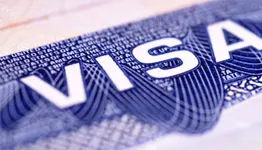

Over the last few years, Australia has become an increasingly popular study destination for international students from all over the world. This is because of many factors, such as Australia’s high-quality educational infrastructure, well-connected transport, excellent living standards and world-class cities full of vibrant outdoors and entertainment activities.
Major Australian cities such as Melbourne are especially welcoming for international students, and received a score of 100/100 from QS Global University Rankings for tolerance and social inclusion, which indicates the high levels of comfort and safety for international students in Melbourne.
With a strong sporting culture and plenty of opportunities to explore both the Australian countryside and the ocean all around the country, life in Australia also allows international students to remain fit, exercise and explore exciting natural landmarks during your time away from the classroom.
Australian universities’ focus on research & innovation alongside world-class academics is a further plus for international students, who are also attracted by the country’s flexible post-graduation employment policies.
For more information about studying in Australia as an international student, check out our Australia directory, where you will find info about tuition fees, what courses are available, and a list of Australian universities.
Since July 2016, Australia has been offering ‘Subclass 500’ student visas to international students for a duration of five years, beginning with your enrolment date at an Australian university.
You can apply for this visa from anywhere in the world, and even your family members can travel with you by applying for a dependent visa. But you must make sure that you have fulfilled the following requirements in order to apply for the Australian subclass 500 student visa:
In addition to the subclass 500 visa, there are two additional visas for students involved in short-term study, such as exchange programmes, at Australian universities:
The following nine documents are a must for all international students in order to submit as part of the Australian student visa application:
The International English Language Testing System (IELTS) is the world’s most popular English language test, and you will require a minimum score of 5.5 to qualify for a subclass 500 Australian visa. Top-ranked Australian universities may require an even higher score, usually at least 6.5.
Obtaining a subclass 500 visa requires an application through ImmiAccount, the online visa portal operated by Australia’s Department of Home Affairs (DHA). The Australian DHA recommends that international students submit their application no earlier than three months before your degree programme begins, and no later than six weeks before your course starts. The standard time taken to process an Australian student visa is between 3 and 5 weeks, and the maximum time it can take is up to 3 months.
For additional questions regarding your subclass 500 visa application, you can contact the Australian DHA.
For international students pursuing degree programmes at Australian universities, there is one compulsory charge, which starts at 650 AUD, for processing a subclass 500 visa. For more detailed information about how much it will cost to apply for an Australian student visa, visit the Australian DHA website.
Luckily for international students, the Australian DHA has recently decided to increase the work allowance for subclass 500 visa holders due to a shortage of workers in the post-covid Australian economy. As a result, international students can now begin working even before their degree programme begins. Additionally, you can now work up to 20 hours a week in any sector of the economy and not just the sectors related to your degree programme.
Many international students choose to work in part-time jobs or internships in order to offset living expenses in Australian cities. Online portals are usually excellent resources for locating ideal jobs in major Australian cities such as Sydney and Melbourne.
In order to retain your subclass 500 visa while in Australia, you are legally required to maintain enrolment in your degree programme and ensure satisfactory course attendance and course grades.
Once your degree programme in Australia is complete, you can then apply for a Temporary Graduate (Subclass 485) visa that allows international students to stay and work in Australia for a minimum of 18 months and a maximum of 4 years, depending on your qualification. You must apply for this visa within six months of the expiry of your subclass 500 student visa, alongside providing English proficiency and other required documents as part of the process.
If you are studying online at an Australian university, you must successfully complete all course requirements as a result of at least two academic years or 92 weeks in order to qualify for the subclass 485 work visa.
For further information about student visas, see our International Student Visas article.
Study in AustraliaSign up to StudyLink.com, the home of quality study abroad advice.
Sign up now
Read our key advice article to help you make the best decision for your education and start your International study adventure.

In this article we look at how to approach choosing where in the world you would like to study.

Read StudyLink's suggestions on your first steps when deciding where to study abroad, with helpful tips to make your decision easier.

Find out more about English language tests, your options and what is required as an overseas student.

StudyLink.com take a detailed look into the costs of studying abroad and all the aspects that you should budget for when embarking on your studies.

We answer 10 common questions about applying for a student visa to help make your visa application quick and easy.

Find out more about international student visas for studying abroad, as well as how, where and when to apply for yours.

Find out more about funding and scholarships for international students, and what financial assistance might be available to you.

How to choose a course that fits you? Check our top tips on choosing which course is best for you to help you make an informed decision.
The latest articles from study abroad providers and StudyLink.com to hep you on your study abroad journey.

StudyLink